We fought in Syria. There were not only advisers
After the signing of the “treaty” a new aggravation of the situation in the region occurred. The Middle East settlement was thrown back. Israel, on the other hand, significantly tightened its position and expanded the scale of its expansion.
In 1980, the Arab world was dealt a second blow - the war between Iran and Iraq began. The conflict has aggravated relations between Syria, Jordan and Iraq. Not without the influence of Israel on the territory of Syria, the bloody massacre of the "Muslim Brothers" was launched, drawing the regular army of Syria into bitter fights. The situation in Lebanon and the intra Syrian contradictions on the Lebanese question have become extremely aggravated.
The service of the Syrians in Lebanon was not easy and took place in a difficult, often conflicting situation, especially between the right-Christian forces (Lebanese forces) hostile to the Syrians and frequent clashes with Israelis, primarily in the sky.
The air battles between the Israeli F-15 aircraft and the Syrian MiG-21 took place almost daily, with heavy losses for the Syrians. And this is not surprising, the MiG-21 obsolete modifications were inferior in tactical and technical terms to the more modern F-15s. The situation was further aggravated by the fact that in Lebanon there was no real radar field enabling Syrian aviation detect aerial targets. The same can be said about the electronic equipment of the MiG-21 aircraft. Hence the low noise immunity. There was no need to talk about such an important technical and tactical factor as the hidden control of aircraft.
The same situation was in the ZRV. Anti-aircraft missile systems of all systems were poorly protected from interference and vulnerable. In addition, the Israelis knew all the frequencies of the Syrian complexes and easily carried out the opposition. It was not in the Syrian air defense forces and air force and modern automated controls (ACS). These are the reasons for the great losses suffered by the Syrian army on two fronts - in Lebanon and on its territory.
In this difficult situation, Syria turned to the USSR for help. October 9 1980. the whole world learned about the negotiations in Moscow, about the signing of the treaty on friendship and cooperation between the USSR and Syria. Under this treaty, both the construction of the Syrian armed forces and the principles of manning them with military advisers were envisaged.
October 10 1980 in Moscow, after the issue of my appointment as Chief Military Advisor, Chief of the General Staff of the USSR Supreme Soviet Marshal Sov. Union N.V.Ogarkov set before me a specific task - to create in the Syrian armed forces an organized, knowledgeable, efficient, disciplined team of military advisers. On this basis, in the shortest possible time to deploy a modern orgshtatny structure taking into account the combat capabilities of our military equipment arriving in Syria, to develop new forms and methods of conducting combat operations with a specific enemy.
October 15 1980 G. in 10 hours of the morning Moscow time. a civilian aircraft of the USSR rose from the Sheremetyevo airfield of time and headed for Damascus. On this plane, having changed into civilian clothes, I flew. The high speed of the aircraft was doing its job: under the wing, dear to Odessa’s heart, where the wife and children were left, the Black Sea soon disappeared, and the mountains of Bulgaria, then Turkey, appeared in the distance. Sitting in a noisy cabin, I recalled a conversation with USSR Minister of Defense Ustinov, asked me a question: “Tell me, general, honestly, did we make the right choice on your side? ..” It was not easy to answer, and N.V. Ogarkov helped, he helped, he warned me: “Dm. Fedor.! The choice is correct, there is no mistake ... ”The thought did not give rest: what did the minister doubt? In what? Why?
At 15.00 local time, the plane landed at Damascus airfield.
From the same day I took up my duties. The first thing I had to face was the unpreparedness of the Syrian armed forces, especially the air force and air defense units, to repel a possible Israeli attack. And it could begin any day, at any time.
Soon other comrades began to arrive from the USSR. Senior Advisor on Air Defense - Lieutenant-General of Artillery KS Babenko, former Deputy Commander of the Baku Air Defense District, participant in the Great Patriotic War and the Vietnam War; for the Air Force - Gen. -Lt. Aviation V.Sokolov, for EW - Gen.-Major - Engineer Yu.Ulchenko. Following them are advisers to the anti-aircraft brigade colonels V.V. Roslyakov, A.Yu.Pukhtinsky, I.N.Kovalev, lieutenant colonels N.V.Nesterenko, N.I. Makarov, and other comrades. Colonels I.P. Lavrentyev, A.S.Russkikh, E.I.Ionesyan, T.A.Dubasov, V.N. Verbot, Yu.M.Ilichev and others arrived at the Central Directorate of Air Defense and Air Force. All specialists of the Surn, Unk and Unz air defense missile systems were staffed with specialists.
The multi-hundred staff of advisers and specialists quickly got involved in the work. And there was a lot of work ahead: to deploy mixed anti-aircraft missile brigades and two air defense divisions, two mixed aviation divisions, to complete all of this with equipment, weapons, and control devices; to build combined command posts of air defense and air force divisions. As they arrive from the USSR, deploy automated controls. On the basis of the existing and incoming equipment, create a material and technical base, help the Syrian comrades to study and master all this in order to be able to apply in a combat situation. Taking into account the specific situation, it was necessary to develop and propose to the Syrian side a new one, corresponding to our system of planning and organizing operational and combat training, to develop and introduce new methods and methods of troop training.
The solution of these far from simple tasks took place under conditions of unbridled rampant of terrorists - opponents of the progressive Assad regime. The loss began to bear and the Soviet people. In the city of Hama, 4 of our officer was shot while traveling to the airfield. After some time in Damascus, the headquarters of the Air Force and Air Defense was undermined, about a hundred Syrians were killed, many were injured, including 6 of our advisers, in particular, Advisor to the Chief of Staff of the Air Force and Air Defense Gen.-Major Glagolev.
Since April, 1981, the Israeli aviation seemingly by mistake instead of the Palestinian camps in Lebanon began to strike at Syrian troops. There was a question about their cover. In the second half of April, 1981. the territory of Lebanon was introduced and covertly dispersed: an anti-aircraft missile brigade of mixed composition, two anti-aircraft artillery regiments, two radio engineering battalions and two EW battalions. The result was felt very soon: 4 Israeli aircraft were shot down (three F-16 and one F-15). And the raids on the troops stopped. But other “raids” began - ultimatums. 30 April America demanded that Syria withdraw from Lebanon SAM. Syria rejected these claims, while also declaring that it will defend Lebanon as well as its territory. In response to the ultimatum of the United States, the USSR also made a statement: it will continue to support Syria’s positions on resolving the Lebanese crisis.
May 5 was handed to me that together with President Assad, who will arrive there with a working visit after May 10, I should arrive in Moscow. Before departure, 7 or 8 in May, together with the SAR Defense Minister corpus General M. Plass, we went to Lebanon in the area of firing positions of the air defense missile system: the minister was interested in the preparedness of combat crews. Everything turned out as ordered. Do not have time to get out of the car, as a group of Israeli aircraft. They tried to reach the goal. Two missile launches - two aircraft shot down, the rest turned back. The minister was delighted. He asked what I would advise to further improve the combat capability of the air defense system. I said that it was necessary to maneuver the divisions more often, change positions more often. To facilitate the task, each division must have 3-5 spare positions with exit routes ...
I was not able to leave for Moscow, the situation did not allow me. 10 in May, the United States and Israel provoked Lebanese "phalangists" who, with the support of Israeli aviation, attempted to capture the mountainous areas of Baruk and Sanin, where the air defense system was located. However, the attempt failed: the attacks were repulsed. At the same time, during the day of the 3 battles, the missilemen shot down another 3 aircraft - two F-15 and one F-4.
After H. Asad’s return from Moscow, I was informed that in the near future 50 MiG-23MLD aircraft would arrive in Syria.
What we did in Syria did not go unnoticed by the enemies of the Assad regime. By the fall of 1981. they began to openly hunt us. Twice they fired at my car, and on October 4 attempted to guard the building where the headquarters of the main military adviser was located, the families of other advisers lived. At the same time, our sentry was seriously injured. October 5 enemy managed to blow up this building. 6 people were killed and about 20 (m. 200?) Were injured, of which 23 - hard. I was contused.
We believed that active hostilities, and in fact the second war to crush the Palestinian camps and expel the Syrians from Lebanon, would begin after a rainy season - in late May-early June 1982. The prediction came true, the fights began on June 14.00. Taking into account the specifics of the magazine "Air Defense Bulletin", I will not describe in detail the course of the combat operations of the ground forces, I will say only the most important thing. On the fourth day of the fighting, the initiative in the land battle passed into the hands of the Syrians, the advance of the Israelis was halted. The Syrians began to prepare for the counterattack. To cover the counter-attack group on the night of 6 on 9 June, the 10-I mixed anti-aircraft missile brigade and three anti-aircraft artillery regiments were introduced into Lebanon.
The United States, apparently realizing that, in the person of Israel, they could lose their mace in the area, they began urgently to take the necessary measures. On the morning of June 10, F. Habib, personal envoy of R. Reagan, arrived in Damascus, followed by US Secretary of State Schultz in the afternoon of Damascus. But the pressure on the Syrians was not crowned with success. The Syrian President rejected all ultimatums and ordered the Minister of Defense on 7.30 11 to put an already prepared counterstrike.
After Damascus, American emissaries appeared in Tel Aviv, and on June 10 on Israel, 16.30 threw in its "trump card" - launched an air strike to eliminate the Syrian missile "Zonta" in the Bekaa Valley. This operation was carried out not so much to destroy the Syrian air defense system, as to prove its superiority in the air, to instill fear in the Syrians, to convince them that the "roof" over the troops and over the territory of Syria is not reliable.
It must be admitted that with this operation the Israelis have achieved a great deal, and above all in the moral and psychological terms. They inspired an anti-regime reaction inside Syria and shook healthy forces and even H. Assad himself and his entourage. By the end of June 10, Shults and Habib returned from Tel Aviv to Damascus, and after lengthy negotiations and promises, Assad made concessions. The parties agreed, on 12.00 11 June, the fighting between Israel and Syria on Lebanese territory was stopped.
I consider it necessary to consider in more detail the Israeli military actions, tactics and equipment of their aircraft on that victorious day for them 10 June 1982. Do not admire, namely, to consider, and with pain in the soul. It would be possible to admire when Syrian suddenly turned out to be on the site of Israeli aviation. But this "suddenly" could not be, because our help - I mean weaponTechnique was extremely weak and untimely. Delay, delay - our eternal disease.
The Israelis were able to carry out the suppression of the air defense missile system only in a narrow sector - in the area of responsibility of the 82 mixed air defense missile brigade, and as a result of jamming, they also hit nine air defense divisions concentrated in the mountainous areas of Kasyun and Baruk in Syria.
The operation to suppress the air defense system in Lebanon (Bekaa Valley) was developed as follows.
The first. An electronic strike team was created. This group included unmanned aircraft - reconnaissance aircraft of the Scout (Israel) and Firebird (US) type. Flying on above the SAM-6 SAMs, they conducted a direct television broadcast of the image to the command post. Obtaining such visual information, the Israeli command made unmistakable decisions to launch missile strikes. In addition, the same unmanned aircraft put interference. They spotted the operating frequency of the radar and guidance equipment Syrian missile systems. Moreover, playing the role of "bait", causing the Syrian air defense missile system to fire on itself, reconnaissance aircraft diverted it from combat aircraft.
The Hokai early warning aircraft also belonged to the radar support team. Their functions: serif and control of the activity of the Syrian aircraft. The EW Boeing 707 aircraft and 53-type helicopters were continuously flying over the northern regions of Palestine and interacting with EW ground installations, listening to the Syrian air and air defense radio networks and jamming them with interferences. Bearing in operation, the Syrian radar, they refined their coordinates and transmitted to the operational (command) point, which contributed to the delivery of accurate strikes.
The second. Three strike groups were created.
The first group is ground-to-ground missile launchers of the Standard Arm type. These installations operated from the tops of the mountain region of Harmon, which dominated the positions of the Syrian air defense forces.
In addition to ground-based rocket launchers, long-range artillery and rocket artillery units participated in the destruction of the air defense missile system, using ball and cluster munitions that were able to be aimed at the target (especially at the final stage) using an infrared and laser beam.
The second strike group included Phantom fighter-bombers equipped with Standard Arm, Shrayk, Maverick missiles. "Phantoms" destroyed the remaining radar and launchers, and from ranges exceeding the range of the Syrian anti-aircraft medium-range missiles (from the 60-80km line).
These were planes designed to suppress the air defense system. Special engines were installed on them, which did not leave behind a trace of condensate, which made it difficult to visually detect the aircraft. They were equipped with an EW system codenamed “FR-38”. This system accepts the frequencies of the enemy’s radar and automatically interferes with them. 52 antennas installed throughout the aircraft’s fuselage provide stable reception of radar signals. Were on the aircraft and other innovations.
The third strike group consisted of the Kfir and F-15 fighters, which completed the destruction of the remaining launchers with conventional bomb strikes.
During that 10 operation in June, a major air battle took place in the sky of Lebanon. On both sides participated in it about 350 aircraft. In this battle, Syria lost 22 aircraft (4 MiG-23МФ, 8 MiG-23MS, 10 MiG-21bis). Israelis have lost 10 aircraft. In general, from 6 to 11 June, the Syrian air force shot down 23 in air battles and lost 47 aircraft. Anti-aircraft missile brigades in the skies over Lebanon and partially over Syria destroyed 35 air targets, of which 27 aircraft.
Thus, during the week of the war, the Syrians shot down 58 air targets using SAM and air force forces. Of these: -50 aircraft, unmanned vehicles - 8. The Syrians themselves lost 47 planes shot down in aerial combat, and 20 lost the enemy’s anti-aircraft missiles.
In these battles, the Central command post of the Air Force and Air Defense under the leadership of divisional generals Omar Sunuf, Ali Malyahafadzhi, Ali Saleh worked intensively and harmoniously. The management of radio engineering units and parts of the EW generals Samir Ataya, Salah Edwin Ashram skillfully carried out. But due to poor technical equipment, these units could not fully ensure the tasks assigned to them. They made the impossible possible.
The Soviet Air Force and Air Defense Center, as well as at other command and control centers, in the combat formations of the Syrian troops and in firing positions in Lebanon, along with the Syrians, our Soviet people worked tirelessly and selflessly. With airmen - officers under the leadership of generals V. Sokolov and N. Glagolev. In the case of tablet players, consoles, and control systems of the air defense missile system, advisers are led by General K. Babenko.
In general, the training of Syrian generals and officers was not bad, but at this stage they needed specific help. The fact is that our controls began to arrive in Syria only six weeks before the start of the war, and the ACS simply did not have time to master the control systems. And not only ACS. Assistance was also required at the combined, not yet fully deployed, divisional, brigade points of the air defense and air force. And the Syrian command noted with great gratitude the work of Colonels V.Roslyakov, N.Makarova, I.Kovalev, A.Russkikh, E.Ionesyan and others. All of them were awarded the Syrian and Soviet orders.
Special thanks were earned, of course, by those who were under fire — on the positions of the air defense system divisions, at the Surn, Unk, and Unz stations. They showed models of skill and courage, their example helped the Syrians to withstand and perform all combat missions. These are Major V.Zenin, Senior Lieutenants A.Sergeev, N.Burchakov, A.Danilchuk, N.Davydov, Lieutenant Colonels Y.Ushanov, J.Lysenkov, V.Paschenko, Major S.Ilchenko, Senior Lieutenants S.Pyankov, V. Borisov and others. Many of them are marked by state awards.
Admittedly, the Israelis were able to capture and maintain superiority in the air and over the battlefield. Many factors contributed to this, but I will mention only a few, from my point of view, the main ones: a good airborne detection system that relied on the Hokai early warning aircraft and ground radars installed on commanding heights in the combat area; the presence of an electronic warfare system, which makes it possible to eavesdrop on the Syrian air force's radio networks: intercepting orders coming from the ground to the Syrian aircraft, the Israelis hammered their radio networks and radars with interferences. Stunned "and" blinded "Syrian pilots fell under the sudden attacks of Israeli aircraft capable of hitting targets from long ranges and from various angles due to their air-to-air missiles such as Sidewind, Python 3.
The reader may ask, why we, the Soviet experts, did not help the Syrians to achieve opposition, equal to that which the Israelis have achieved? My answer: we could not do it. All receivers of Syrian complexes were suppressed by very high-density interference over the entire frequency range. And in order to fight them, it was necessary to weaken their power no less than 20-30 times. Unfortunately, the Syrians did not have such opportunities. We did not have them either. At that time, electronic intelligence and jamming systems of the SAR Armed Forces could not provide a violation of enemy command and control or even minimal protection of their aircraft, air defense missile systems and their other air defense forces and equipment for only one reason - the limited frequency range of suppression.
In this war, the Israelis created a well-functioning electronic warfare system equipped with modern technology. Electronic warfare funds were installed even on tanks, ships, not to mention combat aircraft, and even more special ones, such as Boeing-707, S-97 Hawkeye, Phantom (AF-4ji).
The integrated and massive use of electronic warfare, missiles and guided bombs with optoelectronic and radar homing heads was a decisive condition for Israel’s success in suppressing the Syrian air defense force in Lebanon and conquering airborne air supremacy. Experience has shown that without a modern automated control system, sustained noise immunity of radar and communications equipment, the creation of the necessary radar field for aircraft, it is impossible to control modern aviation and air defense systems.
The “truce” reached on 11 on June 1982, did not last long. The Israelis used it to regroup their forces in Lebanon, the United States and their allies to concentrate their fleets off the coast of Lebanon. 18 July Israelis broke the truce. In the sky of Lebanon, fighting broke out again, on the ground - fierce tank battles. But success again did not accompany Israel. This is recognized even by former Secretary of Defense Sharon. In the journal Namakhane he wrote: “The fighting with the Syrians in the direction of the Damascus-Beirut road was stubborn and bloody. Unfortunately, this time we were not able to achieve the desired results. ”
Americans came to the aid of the Israelis. They landed marines on the Lebanese coast, and part of the forces entered the West Beirut. In the current situation, the USSR needed to do something more for Syria. At the end of October, 1982, Ambassador V. I. Yukhin and I, the chief military adviser, were called to Moscow. After our reports on the current situation, the Syrian leadership was invited to Moscow, and a new stage began in our joint activity.
In early January, 1983. a long-range anti-aircraft missile regiment arrived in Syria with Soviet military personnel under the command of Colonel Bas. He did not stay long, he was replaced by Colonel S. B. Pokrovsky. The regiment concentrated in the Dumeirah area (40 km west of Damascus) and immediately took up combat duty. Soon arrived and other military units: technical regiment, it is located in the Green Guta: EW helicopter squadron, EW units based on the ground; in early February, a long-range anti-aircraft regiment commanded by Colonel I.I. Teterev. The regiment took positions in 5 km. East of g.Homsa. Profits new ACS; new military air defense systems "Osa-Oka" for the recruitment of mixed brigades in the combined-arms divisions; MiG-25 and MiG-23MLD aircraft with new airborne locators capable of tracking and launching 4-6 targets automatically; new missiles and bombs of volumetric explosion and high-power ammunition ...
The staff of advisers and specialists was increased, the post of deputy chief military adviser was introduced, and Major General M. Kolesov became the head. At my headquarters, starting from 1983, the operational control group from the naval squadron was located. In the Lebanon-Syria sector, it cooperated with the Syrian armed forces, especially with fighter aircraft and long-range air defense regiments.
The United States did not like it. And again, power methods and ultimatums: Syrian troops must leave Lebanon.
Ultimatum rejected.
In December, the naval blockade of the coast of Lebanon by the combined forces (USA, Britain, France, Italy) began. Shipboard artillery in conjunction with the bomber aircraft began to deliver massive strikes against the national-patriotic forces of Lebanon and the Syrian troops occupying defenses in the mountainous areas of Sanina, covering the Damascus-Beirut highway, as well as against the Syrian troops defending in the Bekaa valley.
The Syrians launched a series of retaliatory strikes against the US naval grouping. Began to act against carrier-based aircraft. For six days, the rocket men shot down nine American aircraft, incl. five A-6, three F-14, one F-4, in addition, four Israeli and two French decks "Super-fmb" (?). In the air battles on the MiG-23MLD, the Syrians shot down four Israeli aircraft (three F-15 and one F-4), without losing a single one.
Before the blockade, the Americans used the Firebie reconnaissance planes massively over Syrian troops in Lebanon, as well as over Soviet air defense systems in Syria. The direct-protection divisions - “Wasp” shot down: 202 zrp - five unmanned aircraft, and the 231 regiment - six. 202 SPR launching one missile shot down an Hokai early warning aircraft at a range of 190 km.
And the flights of the United States and Israel stopped.
The effectiveness of the actions of the Syrian air defense system at this stage was also discussed by the US press. In one of the sources it was written: "American artificial earth satellites and airplanes equipped with the most modern electronic equipment sent a huge amount of interference into the sky of Matna (Jabel province of Lebanon), but Syrian missiles were able to overcome them with great ease and hit all the targets." And: “Damascus is now ready for any surprise. The destruction of the American planes and the capture of the American pilot Robert Gutman, the strikes against the ship group, which forced the Americans and their allies to retreat to the shores of Cyprus, is not only a military, but also a political victory. X Assad could not have ordered retaliatory actions if he had not relied on a firm conviction of success. ”
US Secretary of Defense Caspar Weinberger threatened with the battleship New Jersey. However, the Syrian War Minister M. Tlas said: "Shot down American planes can sink and American ships" Any bans are no longer valid when it comes to the life and honor of the Motherland. " It became clear to everyone that Syria 1983 was no longer the Syria that was at the end of the 70s. She could reject any threats.
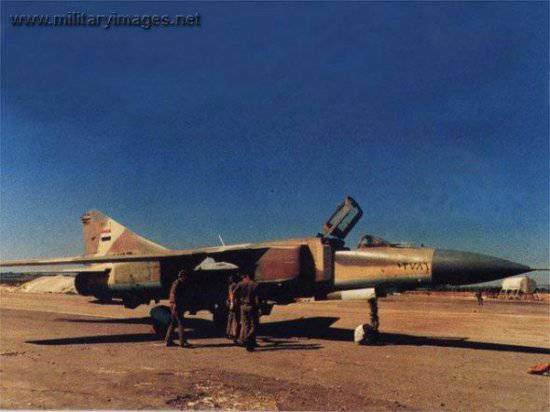
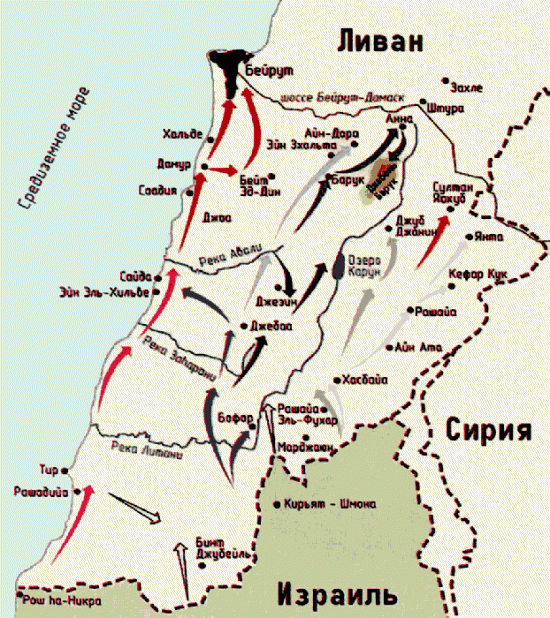
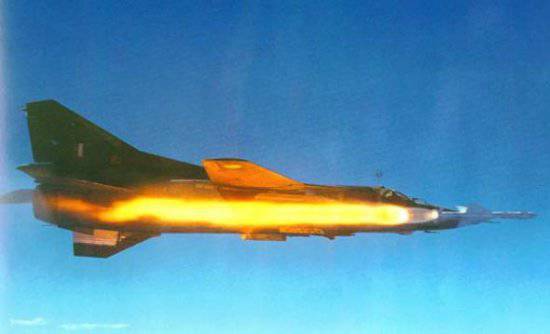
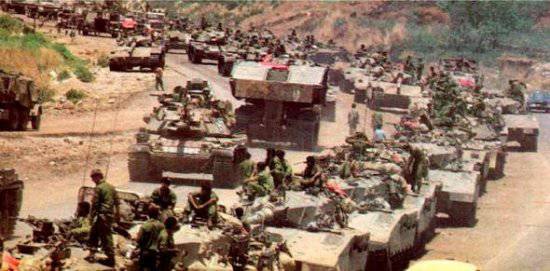
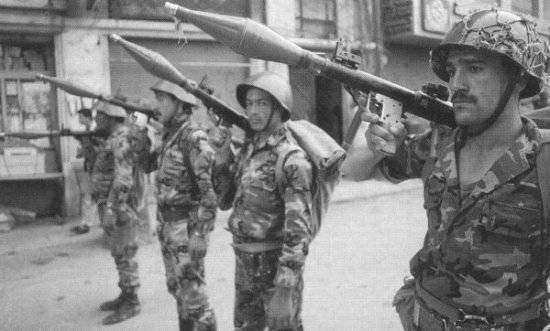
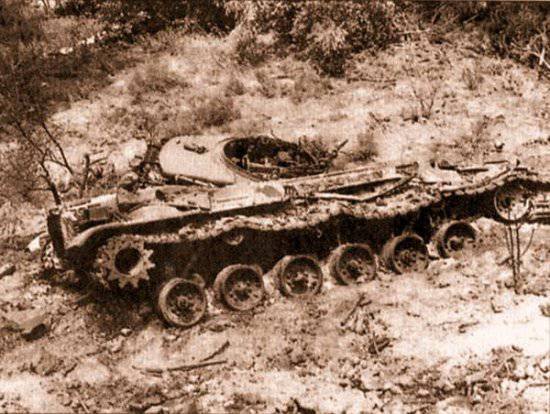
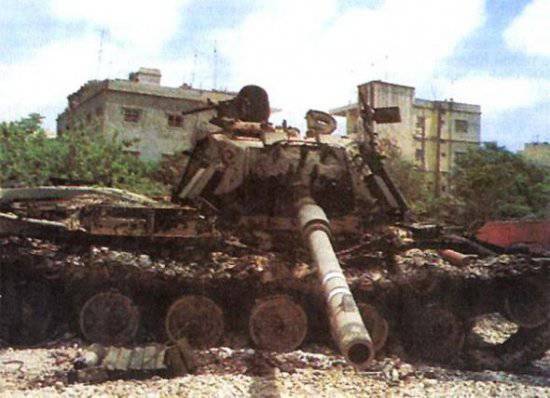
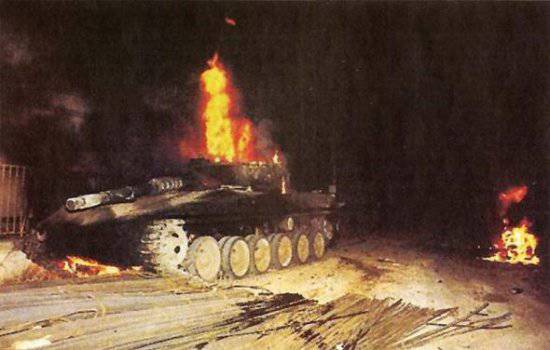
Information